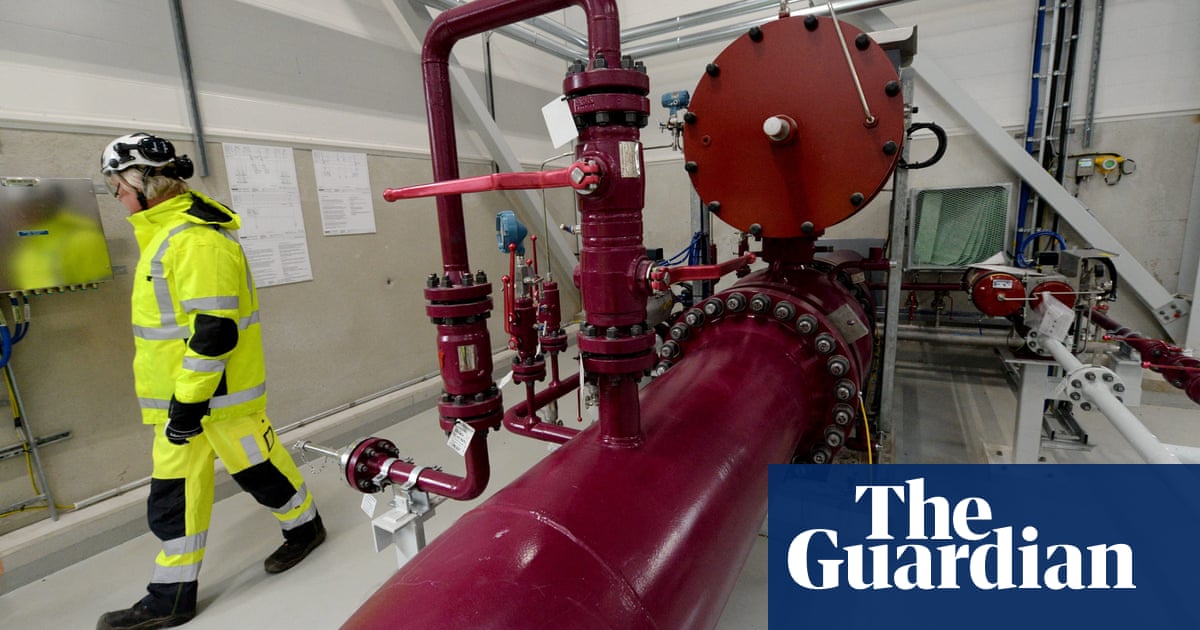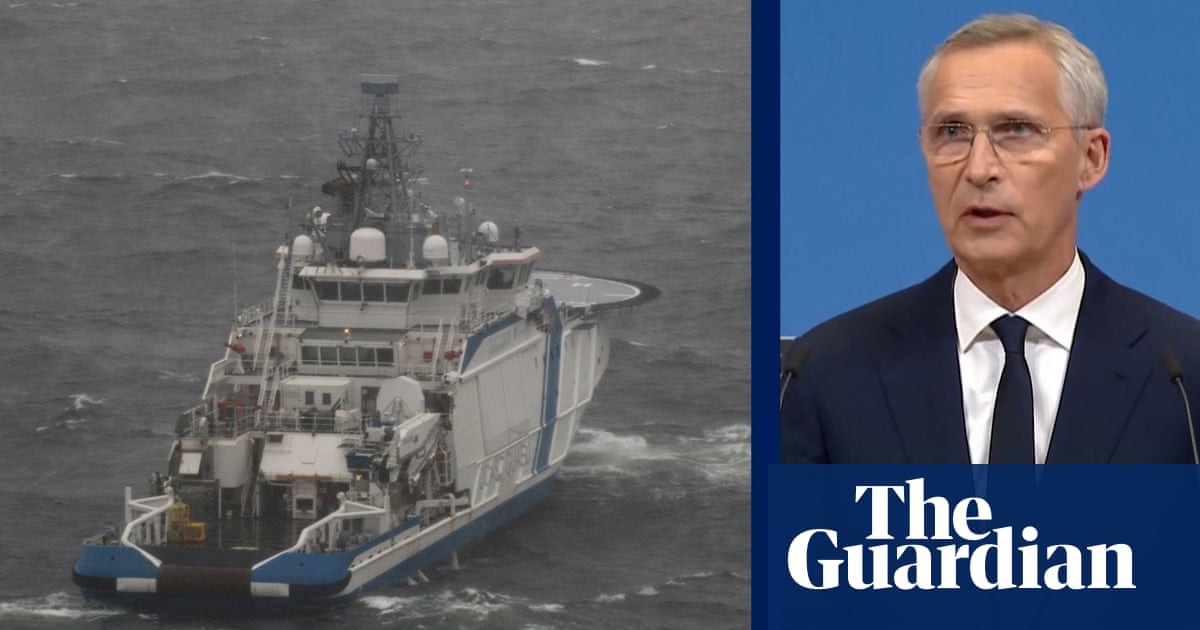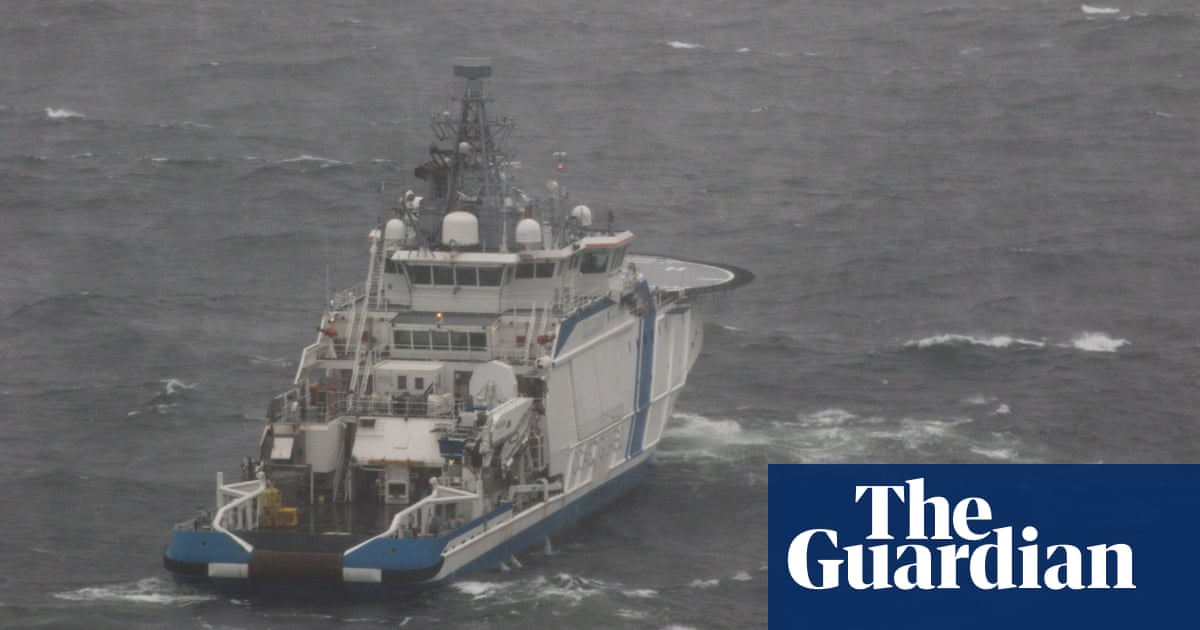
Extensive damage to an undersea gas pipeline and communications cable connecting Finland and Estonia “could not have occurred by accident” and appears to be the result of a “deliberate … external act”, Finnish authorities have said.
“It is likely that the damage to both the gas pipeline and the communication cable is the result of external activity,” the Finnish president, Sauli Niinistö, said on X, formerly Twitter, on Tuesday, adding that the cause of the damage was not yet clear.
Local media cited unnamed government sources as saying Russian sabotage was suspected, while regional security experts said a Russian survey vessel had recently been observed making repeated visits to the vicinity of the Balticconnector pipeline.
Petteri Orpo, the Finnish prime minister, told a press conference in Helsinki that a preliminary assessment suggested that “the observed damage could not have been caused by normal use of the pipeline or by pressure fluctuations”.
Asked directly about the likelihood of Russian involvement, Orpo said he did not want to speculate on potential perpetrators before the investigation was complete. “It’s important … not to jump to conclusions at this stage,” he said.
Niinistö said the government was “in contact with our allies and partners” and that Finland was “prepared, and our readiness is good”, adding that the incident, uncovered early on Sunday morning, had “no effect on our energy supply security”.
Nato’s secretary general, Jens Stoltenberg, said the transatlantic military alliance was “ready to share information about the destruction of Finnish and Estonian underwater infrastructure” and to “support its allies”.
The president of the European Commission, Ursula von der Leyen, condemned the attack, saying: “Our pipelines and underwater cables connect citizens and companies across Europe and to the rest of the world. They are lifelines of financial markets and global trade.”
Timo Kilpeläinen, of the Finnish national bureau of investigation, told reporters that the extent of the damage, in Finland’s exclusive economic area, meant “it could not have occurred by accident. The size category is such that it is a deliberate act”.
There were “no indications that explosives had been used” but the damage was not “the act of an ordinary person”, Kilpeläinen said. “You need a certain kind of knowhow and equipment,” he added.
The incident happened just over a year after a series of underwater blasts burst three of the four pipelines that make up Nord Stream 1 and Nord Stream 2 – a major conduit for Russian fossil gas exports to western Europe – spewing gas into the Baltic Sea.
Because the leaks occurred in their exclusive economic zones, Denmark and Sweden opened investigations into the attack, as did Germany. All three countries have since kept a tight lid on their inquiries.
Markku Hassinen, of the Finnish border guard, said no seismic activity had been recorded in the Gulf of Finland before the discovery of the Balticconnector damage, but “vessels from several different countries” had been monitored in the area.
But seismologists at Norsar, Norway’s national datacentre for the comprehensive nuclear test ban treaty (CTBT), confirmed late on Tuesday that they had registered a “probable explosion” at 1.20am on Sunday.
The Finnish government said in a statement that authorities discovered damage to the fossil gas pipeline and – in Estonia’s exclusive economic zone – to a comms cable linking Finland and Estonia, at about 2am local time (0000 BST) on Sunday.
Officials said the pipeline was severely damaged and likely to be out of service for several months. The Finnish border guard and the country’s military intelligence agency were carrying out a joint investigation with Estonian authorities, they said.
Both countries’ gas network operators on Sunday reported an unusual drop in pressure in the bi-directional, 48-mile (77km) pipeline, which runs across the seabed of the Gulf of Finland from Inkoo in Finland to Paldiski in Estonia.
The state-owned Finnish operator, Gasgrid, said the pipeline had been shut down immediately because of a suspected leak, adding that the country’s gas system was stable, with supply secured through a floating liquefied fossil gas terminal.
The Finnish daily Iltalehti cited unnamed intelligence sources as saying the government “considered it possible that Russia had aimed a sabotage attack”.
Konrad Muzyka, an independent regional defence analyst, said on X that the Russian hydrographic survey vessel Sibiryakov had been detected in the Gulf of Finland near the pipeline and the Estlink cable in May, August and September.
Citing an article in his weekly Kaliningrad Military Digest, which covers military developments conducted by the Russian Baltic fleet’s ground, air and naval forces, Muzyka said: “It’s highly likely Russians surveyed the pipe.”
Charly Salonius-Pasternak, of the Finnish Institute of International Affairs, told public broadcaster Yle that the government “clearly know much more than they’re saying, perhaps because they realise this is so big they must be able to say exactly what happened”.
Commissioned in 2019, the Balticconnector has been Finland’s only fossil gas import channel since Russian imports were halted in May last year after Moscow’s invasion of Ukraine. Fossil gas accounts for about 5% of Finland’s energy consumption.
Finland and Estonia are EU and Nato members bordering Russia. They stopped importing Russian oil and gas as part of sanctions imposed against Moscow after its invasion of Ukraine.
Gas markets across Europe surged to their highest price in six months after news of the damage emerged, with UK gas market prices jumping by almost 15% to 125.4p a therm and the benchmark price for European gas climbing to 49.75 euros a megawatt hour, the highest since April.
The damage ignited concerns across Europe that geopolitical upheaval would tighten gas supplies this winter for countries already forced to replace Russian gas supplies with seaborne shipments of liquified fossil gas, which are typically more expensive.
“This shouldn’t have a major impact on the fundamentals of Europe’s gas markets, but the strong market reaction highlights that there is still a lot of volatility and nervousness around,” said Tom Marzec-Manser, the head of gas analytics at ICIS.












